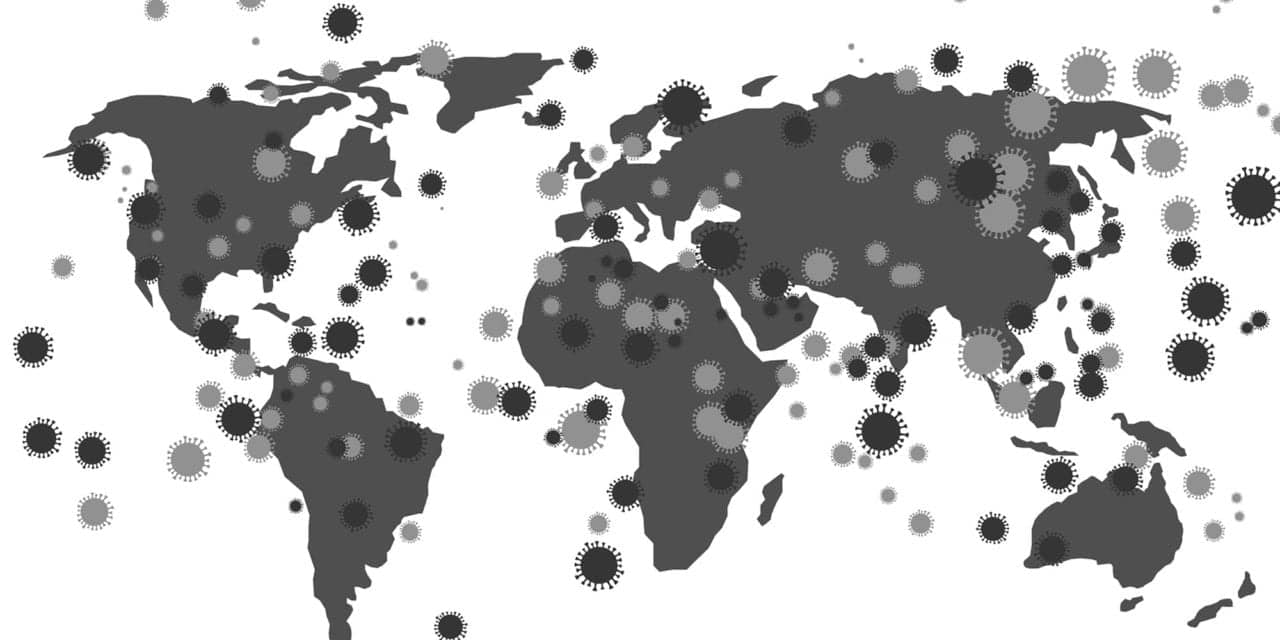Shortages of ventilators, nurses, and funds bode ill for US pandemic and disaster preparedness—both man-made and natural.
By Michael E. Donnellan, RRT, NPS, MBA
Editor’s note: This article first ran in the July 2009 issue of RT. It appears here with updates by Mr Donnellan.
On April 19, 1995, in Oklahoma and again on September 11, 2001, in New York City, America experienced mass casualty events firsthand. The questions of what if the number of wounded casualties outnumbered the fatalities and how prepared were the federal, state, and community medical response systems to deal with a potential surge of patients in the emergency departments went unanswered.
Hurricane Katrina devastated New Orleans in 2005 and provided the answers. Clearly, at all levels of governments and regional authorities, we were unable to respond to and effectively manage community mass casualty events. Have we taken these pages of history and put them to good use for the next massive catastrophic challenge? It is not a question of if one will occur but of when and how bad.

Biochemical terrorism, natural disasters, and pandemic influenzas are all on the immediate global radar screen. All will challenge our ability to deal with large numbers of patients converging on local hospitals’ emergency departments and rapidly impacting and depleting the resources within a very short period of time.
Ambulances idling for hours, a declining number of overcrowded emergency departments, and long waits up to 2 days to be admitted are catastrophic indicators of a US emergency system under siege, in crisis, and getting worse. This is a system that lacks stability and the capacity to effectively respond to mass casualties from large disasters or epidemics, according to studies conducted by 25 experts from the National Academies of Science.1,2
A pandemic3,4 such as the H5N1 avian influenza is considered to be the mother of all mass casualty events and is one of the most likely and lethal of all threats facing the United States, according to the Department of Homeland Security. The State of New York prepared a draft in 20075 for public comment to address the readiness of the state to combat an H5N1 pandemic event. This includes the following conclusions based on agency research:
- The population of New York is approximately 19 million;
- There are approximately 3,981 adult and pediatric ICU beds staffed;
- 15% of admitted patients with avian flu will require intensive care;
- 7.5% of admitted patients will require ventilators;
- There are currently approximately 6,100 ventilators in acute care settings in New York State;
- 85% of the ventilators are in use at a given time and pandemic patients will require three times that of New York’s ventilator capacity; and
- 70% of deaths related to an avian flu will occur in a hospital.
As well, 60% of all individuals who have contracted this Asian strain, H5N1, have died from multisystem failure, ARDS, and acute renal failure within a very short time of disease onset. The turnover time for ventilator use will be extremely intensive considering the acute illness of the patients.
Strategic National Stockpile—Enough?
Based on these results, availability of state and federal stockpiles of supplies and ventilators is mandatory. The Centers for Disease Control and Prevention (CDC) Strategic National Stockpile (SNS)6 is a public health emergency system designed to respond to state requests for medical support in the event of a mass casualty situation.The SNS recognizes that state and local medical supplies will be depleted quickly and has prepared 12-hour quick packages of pharmaceuticals, antidotes, and medical supplies for immediate dispersion and utilization. This is to provide basic medical essentials to buy some time until more full-service efforts are mounted—hopefully within a 10- to 12-day period.
Disasters with mass casualties resulting in respiratory failure will immediately impact local, regional, and national hospital critical care effectiveness and severely compromise patient emergency care. Unnecessary patient mortality will be the result if the necessary quality and quantity of mechanical ventilation required for acutely ill respiratory patients are not available.
Today, hospitals in the United States maintain enough respiratory resources to meet the daily patient demands of their communities, but they have no additional ventilators in reserve to address a pandemic or other disaster. Subsequently, the availability of outside sources, including the federal and state governments, is essential to maintaining a low patient mortality rate.
In July 2007, I attended the AARC Journal Conference in Reno, Nev, titled “Mechanical Ventilation in Mass Casualty Scenarios.”
The CDC was a presenter to the conference and claimed that approximately 4,000 ventilators were maintained in the Strategic National Stockpile.
In 2008, I once again had the opportunity to ask the CDC, “How many ventilators are stockpiled in the Strategic National Storage facilities?”
Once again the CDC claimed that approximately 4,000 ventilators were in storage.
In 2009, the CDC placed an order with CareFusion17 for approximately 4,500 LVT 1200 ventilators, receiving approximately 2,300 to date. What influence could have provided such an accelerated change of heart and action from the CDC? Perhaps we should look to our neighbors.
In Alberta, Canada, the impact of the H1N1 virus was great enough that some of the provinces tapped their government’s stockpile of reserve ventilators.18 In November 2009, Alberta received 45 ventilators from the Public Health Agency of Canada ( PHAC).
Planning Ahead Using Guidelines and Algorithms
Given a 35% attack rate, surge capacity planning will go into effect within the first 72 hours. Within the first week, approximately 37% of the ICU beds and 16% of acute care beds will be occupied. At this point, resources will become rapidly exhausted and mass casualty care will be declared, implementing aggressive, equitable, and ethical triage algorithms and guidelines. Such guidelines and actions are well documented, available, and accessible and should be incorporated in the hospital Incident Command System protocols for mass casualty events for all hospitals.7
In 2008, I was deployed with the Disaster Medical Assistance Team CA-6 to the Democratic National Convention in Denver as a precautionary measure in the event of a chemical-related terrorist attack upon the convention. While in the central command center, a mass casualty event scenario was conducted electronically with the national command center.8 The focus was on caring for chemical burn victims within the Denver metropolitan area. At that time, there were only eight burn beds available in the entire metro area. A multiple casualty event would have required air transportation and medical evacuation to other burn centers in the country. Such a contingency was anticipated, planned for, and coordinated through civilian and military units.
There is a trend in the United States, say the experts, of closing burn centers because they are expensive to maintain and are profit-losing investments due to their specialized requirements of staff, surgeons, and equipment.9 According to the American Burn Association, US hospitals eliminated 132 burn units in 2004, bringing the total to 127, and have reduced burn beds from 1,897 to 1,820. Alan R. Dimick, MD, past president of the American Burn Association, feels that this is a real catastrophe in this country.
Staffing
There is a critical shortage of registered nurses in the United States that could reach as many as 500,000 by 2025, and this demand will increase by a rate of 2% to 3% a year, according to a 2009 report.10
As both physician and nurse shortages continue this trend, the Council on Physician and Nurse Supply,11 a national organization based in the University of Pennsylvania’s Consortium for Health Workforce Research and Policy, predicts the following adverse conditions: inadequate access to care, particularly in rural and inner city locations; lack of emergency preparedness; and decreased ability to accomplish planned expansions of health care services, resulting in negative effects on local and national economies.12
Respiratory therapists also will play a critical role in ventilator management, staff coordination, efficient equipment utilization, and team triage during mass casualties.13 In the event of mass-casualty respiratory failures (MCRF),14 however, augmenting respiratory staff due to shortages will necessitate cross-training efforts of respiratory extenders, such as provided by Project Xtreme,15 an interactive cross-training program specifically designed for a public health disaster whereby nonrespiratory health care professionals are trained in basic respiratory care and ventilator management. The Department of Health and Human Services Office of the Assistant Secretary for Preparedness and Response has endorsed and is cooperating in this training approach in an attempt to address our nation’s current economic and health care crises.
Government’s Concern (or Not)
As of February 2009, the United States Senate passed the $830 billion American Recovery and Reinvestment Act of 2009,16 which includes tens of billions of dollars earmarked for health care and other programs. The House version had originally allocated $900 million for flu preparedness, but the Senate’s version cut $870 million from the bill.
This $30 million dedicated to such a globally destructive event seems like pocket change, and the Senate and House exhibition of partisanship is alarming. Things have changed with the emergence of the H1N1 flu and the WHO’s elevated threat level raised to 6, however. In a recently passed $106 billion emergency appropriations bill, most of which is earmarked for the military, nearly $2 billion has been appropriated to H1N1 vaccine development, antivirals, diagnostics, and surveillance.
Man-made and Other Disasters
Public transportation systems are excellent targets, and attacks upon them can result in multiple or mass casualties. London, Madrid, Moscow, Paris, Tokyo, and dozens of other cities have seen how vulnerable their buses and trains are to terrorist attacks. Airports, railway stations, and ferry terminals where crowds of people gather have proven to be very vulnerable and target-rich environments for dozens of casualties.
Critical elements in these scenarios are on-site patient stabilization and transport. Triage, treat, and transport require a coordinated and expeditious model and effort. Three examples provide a glimpse at the level of preparedness for transport emergency capabilities: hurricanes Katrina, Gustav, and Ike.
Hurricane Katrina brought an entirely new meaning to the word chaos, and is on record as an example of utter, complete system-wide failure and breakdown. In the aftermath of hurricanes Ike and Gustav to which I was deployed as part of the Disaster Medical Assistance Team CA-6, along with most of the other DMAT teams in the United States, teams and service equipment and personnel were acutely underutilized, coordination of command centers was poor, and dozens of specialized ambulances and teams idled away days at rallying points, only to be sent home, while many who were deployed were running out of gas on the way to Houston and Galveston.
Summary
“Nature has made up her mind that what cannot defend itself shall not be defended”—Ralph Waldo Emerson.
Global threats and mother nature are all capable of creating high-impact assaults on communities, resulting in large numbers of casualties. That being officially recognized, what logical reason can there be for our nation, states, and community emergency services not to have the capabilities to deal with a mass casualty event? Perhaps other issues, such as the potential collapse of our banking system, two wars, and a health care system under its own siege, take priority.
Because our readiness and level of preparedness appear high on paper only, the tactical plan will focus not on how many patients can be saved but on what it will take to contain the situation as quickly as possible to prevent mass contamination—or cutting our losses. This is a far more radical and realistic approach that will eventually become the core mission on all levels of response.
The H1N1 virus resulted in a global wake-up call to such a degree that the World Health Organization ( WHO) declared an international pandemic alert. Our level and ability to respond poorly represented our inability to produce and distribute enough vaccine in a timely manner.
Considering that the H1N1 swine flu and the H5N1 bird flu can inhabit the same host and have the ability to mutate warrants a much faster response to future more devastating viral mass casualty events.
RT
Michael E. Donnellan, RRT, NPS, MBA, is a respiratory therapist at Sutter Alta Bates Summit Medical Center, Oakland, Calif; and first responder, Disaster Medical Assistance Team CA-6, National Disaster Medical System, US Department of Health and Human Services. For further information, contact [email protected].
References
- Committee on the Future of Emergency Care in the United States Health System. Hospital-Based Emergency Care: At the Breaking Point (Future of Emergency Care). Washington, DC: National Academies Press; 2007.
- Committee on the Future of Emergency Care in the United States Health System. Emergency Medical Services: At the Crossroads (Future of Emergency Care). 1st ed. Washington, DC: National Academies Press; 2007.
- Avian Influenza (“Bird Flu”) fact sheet. Available at: www.who.int/mediacentre/factsheets/avian_influenza/en/. Accessed May 28, 2009.
- World Health Organization. Avian influenza: assessing the pandemic threat. January 2005.
- New York State Department of Health Draft for Public Comment. March 15, 2007. Available at: www.health.state.ny.us/diseases/communicable/influenza/pandemic/ventilators/. Accessed May 28, 2009.
- Strategic National Stockpile. Available at: http://emergency.cdc.gov/stockpile. Accessed May 28, 2009.
- 40th Respiratory Care Journal Conference. Mechanical ventilation in mass casualty scenarios, Part I. Respir Care. 2008;53(1).
- Emergency Management Institute. Independent Study Program. Available at: training.fema.gov/IS/crslist.asp. Accessed May 28, 2009.
- Poovey B. Hospitals are shutting down burn centers. The Washington Post. August 8, 2007.
- Buerhaus P, Potter V, Dtaiger DO, Auerbach DI. The Future of the Nursing Workforce in the United States: Data, Trends and Implications. Boston: Jones and Bartlett Publishers; 2009.
- A National Organization of Healthcare Professionals Committed to Addressing the Challenge of Physician and Nurse Supply. Council on Physician and Nurse Supply. Available at: www.physiciannursesupply.com. Accessed May 28, 2009.
- Bio-era Research Associates. Economic Risks Associated with an Influenza Pandemic, Prepared Testimony of James Newcomb. November 2005. Available at: 74.6.146.127/search/cache?ei=UTF-8&p=Economic+Risks+Associated+with+an+Influenza+Pandemic+Prepared+Testimony+of+James+Newcomb~ Accessed May 28, 2009.
- US Department of Labor Bureau of Labor and Statistics. Occupational Outlook Handbook, 2008-09 ed. Respiratory Therapists. Accessed May 28, 2009.
- Seale H, Leask J, Po K, MacIntyre CR. Will they just pack up and leave? Attitudes and intended behaviour of hospital health care workers during an influenza pandemic. Available at: www.biomedcentral.com/1472-6963/9/30. Accessed May 28, 2009.
- US Department of Health and Human Services. AHRQ Agency for Healthcare Research and Quality Project Xtreme—Cross Training Respiratory Extenders for Medical Emergencies. Available at: www.ahrq.gov/prep/projxtreme. Accessed May 28, 2009.
- Senate to Vote on Economic Stimulus Package Today. February 11, 2009. Available at: www.medicalnewstoday.com/articles/138595.php. Accessed May 28, 2009.
- CDC stockpiles ventilators for use during public safety. The Medcial News. Available at: www.news-medical.net/news/20091020/cdc-stockpiles-ventilators-for-use-during-pandemics.aspx
- Alberta obtains standby ventilators from stockpile. CMAJ. Available at: www.cmaj.ca/earlyreleases/11nov09-alberta-obtains-stanby-ventilators.html. Accessed March 10, 2010.










